科技酷品
2009-09-24
A Brief History of Black Boxes
黑匣子简史
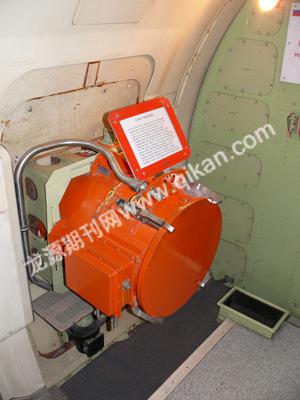
You never see them but they're with you every time you fly. They record where you're going, how fast you're traveling, and whether everything on your airplane is functioning normally. Their ability to withstand almost any disaster makes them seem like something out of a comic book. Known as the mysterious 'black box', these flight data recorders are not actually black, but orange - and when a plane falls from the sky, they're sometimes the only thing that can help authorities discover exactly what happened and why.
虽然你和它们未曾谋面,但是你每次乘飞机时总与之同行。它们记录你去何方,飞行速度是多少,以及飞机上的一切是否正常运转。它们几乎能从所有灾难中幸存下来,像是漫画书中的东西。这些飞行数据记录设备就是神秘的“黑匣子”,其实它们并不是黑色的,而是橙色的。当飞机从空中坠落时,它们是唯一能帮助官方找出发生了什么事以及事故原因的东西。
The June 1 Air France wreck in Brazil inspired the largest marine search for a black box in aviation history (which so far has turned up nothing), and now another sea crash has experts scanning the Indian Ocean for the flight recorders to the Yemenia Airbus A310 jet that went down near the Comoros islands in the early morning hours of Jun. 30.
6月1日,法国航空公司一家客机在巴西附近海域失事,随后一场航空史上规模最大的黑匣子海洋搜寻行动就此展开,截至目前还一无所获。6月30日上午早些时候又发生了一起客机坠海事故——也门航空一架空客A310飞机在科摩罗岛海域坠落,专家正在印度洋搜寻这架客机的黑匣子。
In 1953, Australian scientist David Warren was investigating the crash of a De Havilland Comet in India. Warren couldn't determine the cause of the accident - in which the jet went down six minutes after takeoff, killing all 43 people on board - because there wasn't any useful information preserved in the crash. Over the next year he developed a prototype for a flight memory recorder that would track basic information like altitude and direction. Encased in asbestos and metal, the data and sound recorder was actually called a 'red egg' because of its color and shape. It was later nicknamed the 'black box', after the general term for a seemingly magical gadget that no one knows how to work.
1953年,澳大利亚科学家大卫•沃伦调查一架在印度坠毁的德哈维兰彗星型喷气式飞机。飞机起飞仅6分钟后即坠毁,机上43人全部遇难,由于飞机残骸里没有保存任何有用信息,沃伦无法确定事故起因。之后的几年间,他发明了一个飞行记忆记录设备的原型,能追踪飞行高度和方向等基本信息。这个数据与声音的记录装置外边裹着石棉和金属,鉴于颜色和形状,它被称为“红蛋”。之后人们戏称之为“黑匣子”,是对这个看上去不可思议的新玩意的统称,因为无人知道其工作原理。
Airlines began using black boxes in the 1950s but the instrument didn't become a mandatory feature until 1960, when all commercial planes were required to carry them by the Federal Aviation Agency. Initial versions contained literal tape recorders and were about the size and shape of a basketball. After a number of black boxes were destroyed in crashes (the tapes melted in the fire), they were moved in 1965 from their original position in the landing wells to the rear of the plane - the area most likely to survive an impact. That same year, they were also required to be painted orange or yellow to aid visibility.
航空公司于20世纪50年代就开始使用黑匣子,但直至1960年美国联邦航空管理局要求所有商业飞机必须安装黑匣子后,它才成为飞机上的必备装置。早期的黑匣子带有机械式磁带录音机,大小和形状恰如一个篮球。黑匣子原本位于飞机的起落架舱,由于在多次事故中被毁(磁带在火中熔化),1965年它被移至机尾,因为这个位置受的影响最小。从此,为便于识别,它们的颜色也变成了橙色或黄色。
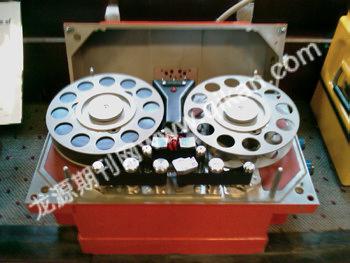
These days, airplanes actually have two black boxes, the voice recorder and the flight data recorder. They can withstand temperatures up to 2,000 °F and impact forces up to 100 Gs. (A 'G' is equal to the force of the Earth's gravity) They track pilots' conversations, engine noises, Air Traffic Control commands, fuel levels, landing gear extension and retraction, and dozens of other clicks and pops that might offer insights into a plane's final moments. The boxes are made out of quarter-inch thick panels of stainless steel. And in case you're wondering, an entire airplane can't be made out of the same material or it would be too heavy to fly.
如今,飞机上有两个黑匣子——录音机和飞行信息记录仪。它们能承受2000华氏度的高温和100G的冲击力(1G为地球引力)。它们能追踪储存驾驶员的谈话、发动机的声音、空中交通控制命令、油量、起落架的收放,以及可以反映飞机(失事)前最后关头的各种杂音。黑匣子由厚度为0.25英寸的不锈钢板制成。你可能会感到纳闷(为什么不干脆用不锈钢板来造飞机),整架飞机可不是同样的材料,否则就会重得无法起飞。
Since the 1960s, black boxes have recorded some astonishing things. In a 1990 incident, a pilot was sucked halfway out of a broken windshield on a British Airways flight; a flight attendant held onto his legs as the co-pilot landed the plane (the pilot survived). In 1994, an Aeroflot pilot allowed his 12-year-old daughter and 15-year-old son to play with the plane's controls during a Moscow-to-Hong Kong flight. 'Can I turn (the wheel)?' the black box recorded the boy saying. 'Turn it.' The pilot replied. 'Watch the ground as you turn. Let's go left.' Moments later, the plane crashed into the Siberian wilderness and all 75 people on board died.
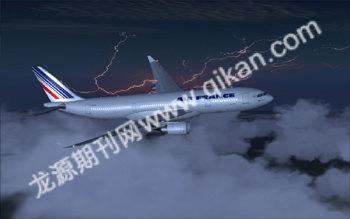
20世纪60年代以来,黑匣子记录了一些惊人事情。在1990年的一场事故中,英国航空公司一名驾驶员半个人被卡在破裂的挡风玻璃之外,一名空乘人员抓住他的腿,副驾驶员将飞机降落,驾驶员得以幸免于难。1994年,在俄罗斯航空公司一架从莫斯科飞往香港的航班上,驾驶员让其12岁的女儿和15岁的儿子玩弄飞机的操控杆。“我能移动(方向盘)吗?”黑匣子录下了男孩的话。“移呗,”飞行员说。“移动时要看着地面。向左转。”没过多久,飞机在西伯利亚荒原坠毁,机上75人无一幸免于难。
And of course there was the black box of United Flight 93, which recorded 30 minutes of fearful struggle as passengers overpowered their terrorist hijackers and crashed the plane into a Pennsylvania cornfield on the morning of September 11, 2001. United 93's passenger voice recordings were the only tapes ever to be made available to victims' family members.
当然,美国联合航空93次航班上也有黑匣子,里面记录了2001年9月11日上午乘客同劫机的恐怖分子长达30分钟的搏斗,乘客最终将恐怖分子制服,使飞机在宾夕法尼亚州的玉米地坠毁。该航班上乘客的录音是罹难者家属唯一掌握的录音带。
Both the Air France and Yemenia Airbus flights crashed into the ocean, which makes their black boxes incredibly hard to recover. The devices are built to withstand depths well over the 15,000 feet in which Air France flight 447's boxes probably now find themselves. The boxes send out a homing signal, activated upon impact, that lasts for 30 days. The time is pretty much up for Air France's beacons, but it's a good bet they'll turn up eventually; of the 20 airplanes that have crashed into water over the past 30 years, only one is known to have lost its black box forever. Even the South African Airlines Boeing 747 that went down between Taiwan and Johannesburg in 1987 had its voice and data recorders recovered from an ocean depth of 14,000 feet. And it only took fourteen months.
法国航空公司和也门航空公司的班机都是坠入大海,因此要找回黑匣子极其困难。黑匣子能承受15000多英尺的深度,而法航447次客机的黑匣子可能已经在这个深度。黑匣子在压力之下能发出一种可持续30天的导航信号。对于法航来说,30天的时间早已过去,但是它们很可能会最终重见天日;30年来,有20架飞机坠入水中,据人们所知,只有一架飞机永远失去了黑匣子。1987年,南非航空一架由台湾到约翰内斯堡的波音747次客机的黑匣子在海底14000英尺处找到。那也只花了14个月的时间。
《时代周刊》
The Walkman - 30 years old
Walkman30周岁
Attention, the 160 million or so owners of an Apple iPod MP3 player: take out those white earbuds and listen for a second. Before the iPod became ubiquitous - way, way before - there was the Walkman. The portable cassette players, first introduced 30 years ago, sold a cumulative 200 million units, rocked the recording industry and fundamentally changed how people experienced music. Sound familiar?
注意,1亿6千万左右拥有苹果iPod MP3播放器的朋友:拔出那些白色的耳塞,听我说几句。在iPod风靡全球之前——很早很早之前——就有Walkman了。这些便携式盒带(磁带)播放机于30年前首次问世,总共销售了2亿台,颠覆了录音业,彻底改变了人们体验音乐的方式。听起来耳熟么?
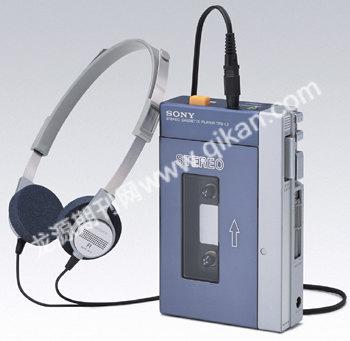
The Walkman wasn't a giant leap forward in engineering: magnetic cassette technology had been around since 1963, when the Netherlands-based electronics firm Philips first created it for use by secretaries and journalists. Sony, who by that point had become experts in bringing well-designed, miniaturized electronics to market (they debuted their first transistor radio in 1955), made a series of moderately successful portable cassette recorders. But the introduction of pre-recorded music tapes in the late 1960s opened a whole new market. People still chose to listen to vinyl records over cassettes at home, but the compact size of tapes made them more conducive to car stereos and mobility than vinyl or 8-tracks. On July 1, 1979, Sony Corp. introduced the Sony Walkman TPS-L2, a 14 ounce, blue-and-silver, portable cassette player with chunky buttons, headphones and a leather case. It even had a second earphone jack so that two people could listen in at once. Masaru Ibuka, Sony's co-founder, traveled often for business and would find himself lugging Sony's bulky TC-D5 cassette recorder around to listen to music. He asked Norio Ohga, then Executive Deputy President, to design a playback-only stereo version, optimized for use with headphones. Ibuka brought the result - a compact, high-quality music player - to Chairman Akio Morita and reportedly said, 'Try this. Don't you think a stereo cassette player that you can listen to while walking around is a good idea?'
Walkman在工程技术上并非是巨大的跨越:磁带技术早在1963年左右就已经出现,当时荷兰的电子公司飞利浦首先发明了磁带,供秘书和记者使用。索尼当时已经很擅长将设计精湛而小巧的电子产品推向市场(它们于1955年展出了其首台晶体管收音机),生产了一系列相当成功的便携式盒带录音机。但60年代末期预先录制的音乐带打开了一个全新的市场。与盒带相比,人们在家里仍更青睐黑胶唱片,但袖珍的盒带比黑胶唱片或8音轨磁带更适合汽车音响,携带也更加方便。1979年7月1日,索尼集团推出了索尼Walkman TPS-L2,这是一款便携式盒带播放机,重14盎司,外部为蓝色与银色,按键硕大,还配有耳机和皮套。它竟有两个耳机插口,因此可以两个人同时听。索尼创办人之一井深大经常出差,为了听音乐,不得不带着笨重的索尼TC-D5盒带录音机。他要求时任索尼执行副总裁大贺典雄设计一款立体声单放机,而且用耳机听时效果最好。井深大将结果——一个小巧而高品质的音乐播放机——带给董事长盛田昭夫,据称他说:“试试这个。你不觉得发明一台可以边走边听的立体声盒带播放机是个好点子么?”
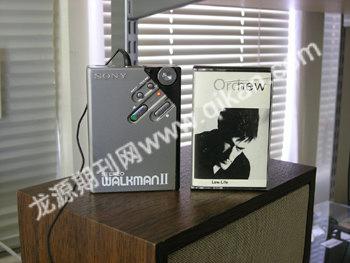
All the device needed now was a name. Originally the Walkman was introduced in the U.S. as the 'Sound-About' and in the UK as the 'Stowaway', but coming up with new, uncopyrighted names in every country it was marketed in proved costly; Sony eventually decided on 'Walkman' as a play on the Sony Pressman, a mono cassette recorder the first Walkman prototype was based on. First released in Japan, it was a massive hit: while Sony predicted it would only sell about 5,000 units a month, the Walkman sold upwards of 50,000 in the first two months. Sony wasn't the first company to introduce portable audio: the first-ever portable transistor radio, the index card-sized Regency TR-1, debuted in 1954. But the Walkman's unprecedented combination of portability (it ran on two AA batteries) and privacy (it featured a headphone jack but no external speaker) made it the ideal product for thousands of consumers looking for a compact portable stereo that they could take with them anywhere. The TPS-L2 was introduced in the U.S. in June 1980.
这台设备现在唯一缺少的就是一个名字了。Walkman起初在美国被称为“Sound-About”,在英国被成为“Stowaway”,但在它销售的每个国家都取一个没有版权的新名字,花费太大;索尼最终决定取名为“Walkman”,是对索尼单声道磁带录音机Pressman的变更,后者即是Walkman的原型。Walkman在日本一问世就大受欢迎:虽然索尼公司预计一个月只会售出约5000台,但前两个月就销售了5万台。索尼并非第一个推出便携式音频设备的公司:世界上第一台便携式晶体管收音机Regency TR-1早在1954年就已经问世,大小只相当于一张索引卡。但Walkman史无前例地将便携性(它使用两节AA电池)和私密性(它有两个耳机插口,但没有扬声器)结合起来,对于成千上万希望有一款可随处携带的袖珍立体声播放机的消费者来说,它就是理想的产品。TPS-L2于1980年6月进入美国市场。
The 1980s could well have been the Walkman decade. The popularity of Sony's device - and those by brands like Aiwa, Panasonic and Toshiba who followed in Sony's lead - helped the cassette tape outsell vinyl records for the first time in 1983. By 1986 the word 'Walkman' had entered the Oxford English Dictionary. Its launch coincided with the birth of the aerobics craze, and millions used the Walkman to make their workouts more entertaining. Between 1987 and 1997 - the height of the Walkman's popularity - the number of people who said they walked for exercise increased by 30%.
20世纪80年代可谓是Walkman的年代。由于索尼这款产品的成功,爱华、松下和东芝纷纷效仿,1983年盒式录音带的销量首次超过黑胶唱片。1986年,“Walkman”一词被牛津英语词典收录。Walkman的发布刚好与有氧运动热的兴起同步,数百万人使用Walkman,以增加锻炼身体的乐趣。在Walkman最流行的1987-1997年,走路锻炼身体的人增加了30%。
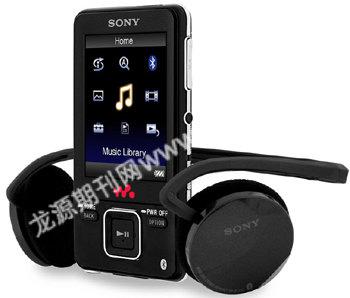
Sony continued to roll out variations on its theme, adding such innovations as AM/FM receivers, bass boost and auto-reverse on later models. Sony even made a solar-powered Walkman, water-resistant Sport Walkmans and even devices with two cassette drives. But cassettes, like any technology, weren't going to last forever. With the introduction of compact discs in 1982 the format began to go the way of the 8-track itself.
索尼继续推出Walkman的“衍生品”,在以后的版本上增加了AM/FM收音机、低音增强和自动翻带等创新功能。索尼甚至还生产了一款太阳能供电的Walkman、运动型防水Walkman,还有带两个卡带驱动器的播放机。然而跟其他任何一种技术一样,盒式录音带不会长久。1982年激光唱片问世之后,盒式录音带就开始走8音轨磁带的老路。
Sony, however, was fairly quick to jump to new formats: it introduced the D-50 portable CD player a year after the first compact discs were sold, and later rolled out MiniDisc and MP3 players under the Walkman brand. (Its insistence for several years on sticking to a proprietary digital music format, ATRAC, left it far behind Apple's iPod in terms of market share.) Since its launch, Sony has released more than 300 different models across all formats; it currently makes Walkman-branded MP3 players, phones and even portable DVD players. Its newest device, the Walkman NWZ-X1000, features a 3-inch OLED screen, 32 gigabytes of memory and WiFi connectivity. But the company still makes play-only cassette Walkmen, too - its latest model released in the U.S. was the WM-FX290 in 2002.
然而,索尼很快转向新的音乐格式:它在第一张激光唱片卖出一年后就推出了D-50便携式激光唱片机,之后又推出了MD和MP3播放机,名字依然是Walkman。它数年间坚持使用其专有的ATRAC数字音乐格式,致使市场份额远远落在了苹果iPod之后。索尼推出了300多种不同的产品,覆盖所有的音乐格式;它现在生产Walkman品牌的MP3播放器、耳机,甚至便携式DVD播放器。它最新的产品是Walkman NWZ-X1000,有着3英寸的OLED显示屏、32G内存,还可以无线上网。但该公司同时仍在生产Walkman盒带单放机,在美国推出的最新版本是2002年的WM-FX290。
《时代周刊》
